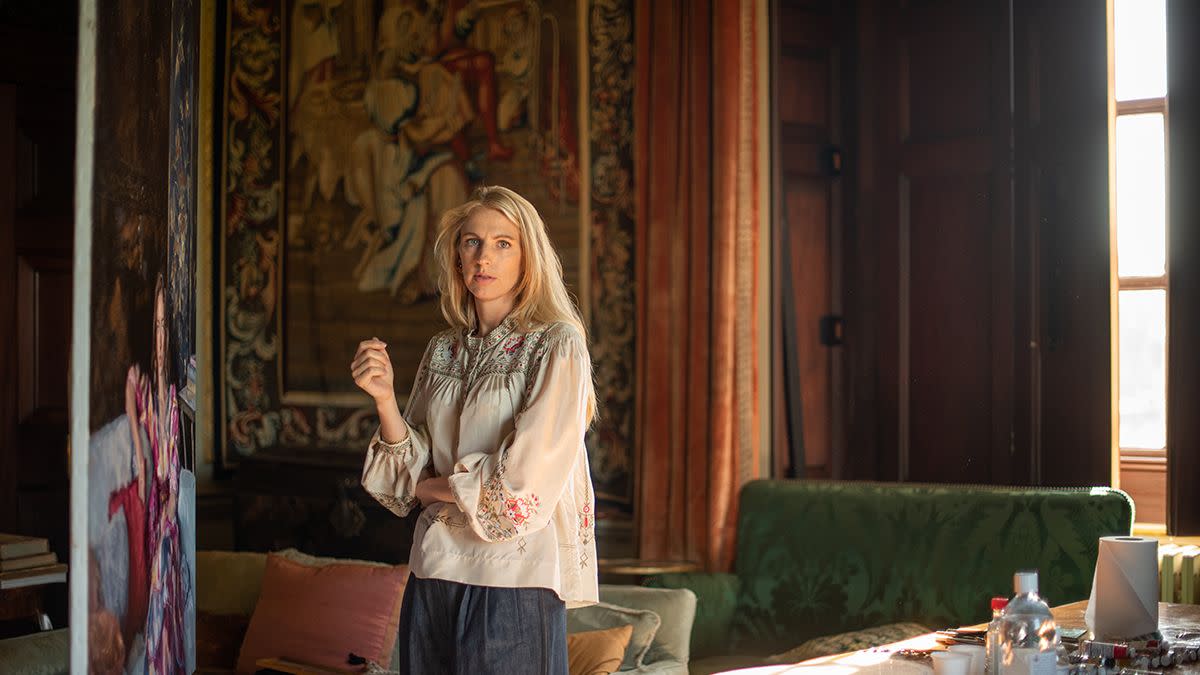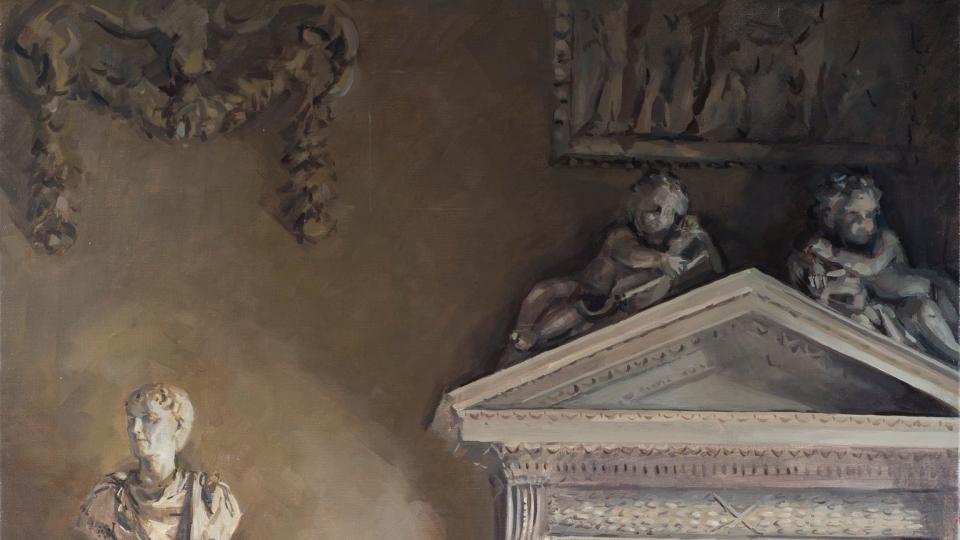How Phoebe Dickinson Became Upper-Crust England's Favorite Painter

A few years ago, the Marquess and Marchioness of Cholmondeley wanted a portrait of their three children–then eight-year-old Alexander, the Earl of Rocksavage, his twin, Lord Oliver, and their baby sister, Lady Iris.
Phoebe Dickinson, a Gloucestershire-based artist, got the call to come to the family home, Houghton Hall, a Palladian masterpiece built in the 1720s, in Norfolk. Instead of choosing a cozy sitting room as the setting for the portrait, Dickinson, who trained as a painter in Florence and London, unpacked her brushes as soon as she saw the boys horsing about in the most imposing space, the Stone Hall, where the fixtures include a monumental bronze cast of an ancient Trojan priest and his sons being strangled by snakes.

Her patrons were delighted with the result. “I asked Phoebe to paint our children because I could see she was brilliant at interiors as well as portraits,” says the Marchioness. “I wanted to capture both the atmosphere of Houghton and the characters of our children.” (Young Lord Oliver became a celebrity of sorts earlier this year, when he served as a Page of Honor at the coronation of King Charles.)
Dickinson’s goal was to do just that. “I want to create something that’s interesting to everybody, not just the people in the portrait,” she says. “What I’m trying to accomplish is a very beautiful painting of people in their environment that will be of interest to other people in the years to come.”
It also doesn’t hurt that portraiture, a genre not always fully respected over the years, is back in vogue. (This fall, David Hockney will unveil 30 new portraits–including a cardigan-clad Harry Styles–at his eagerly-awaited show at London’s newly refurbished National Portrait Gallery, while at the MFA Boston 50 of John Singer Sargent’s magisterial portraits, going on view in “Fashioned by Sargent,” are expected to draw large crowds.) “Covid may have had changed people’s view a bit,” she says. “They were sitting in their houses, and started thinking, I can do with a picture.”

Word of her expertise is out: She has also been invited to other English estates such as Castle Howard, Belvoir Castle, Blenheim Palace, Badminton House, and Highclere Castle to paint portraits. But once her foot was in those doors, she wanted to do more.
“I had been painting portraits of people who live in these wonderful houses, and seeing little glimpses of ideas that would make wonderful paintings—a little girl sleeping in a bed, the back of somebody’s head reading a book—but these weren’t the sort of [subjects] people would commission.”
Frustrated at seeing these unguarded moments of informality in such grand settings, Dickinson decide to capture them nonetheless. The results will be on view beginning November 7 in “Great Houses and Gardens,” an exhibition at London’s Simon Dickinson Gallery. (Phoebe’s father, it doesn’t hurt to add, is a prominent British dealer.) The exhibit also features two paintings completed at Highgrove, where King Charles allowed Dickinson to depict scenes of his garden.
“These places speak to me because of all the thought and creativity that’s gone into them. The architecture, the furniture, other artworks on the walls, the combinations of colors and textures, even the way the light falls into a room,” she says. “I want to create paintings rather than portraits.”
You Might Also Like


